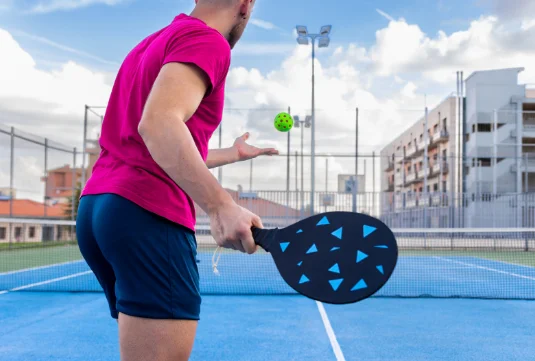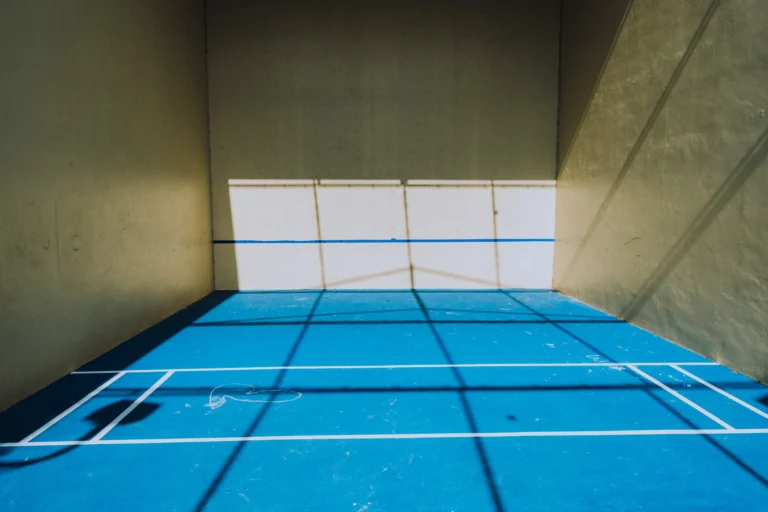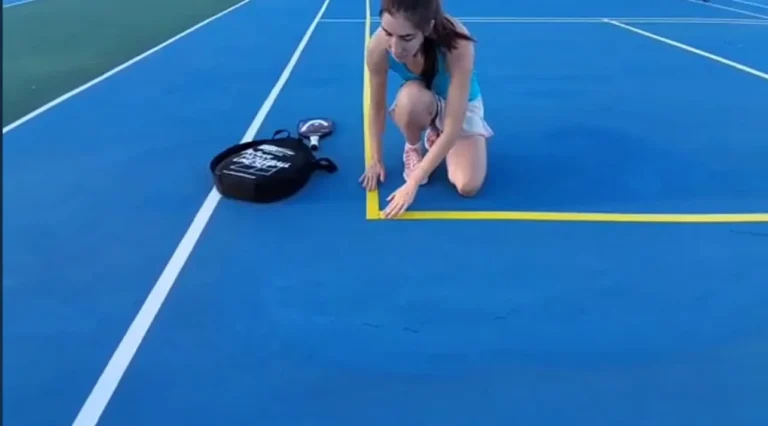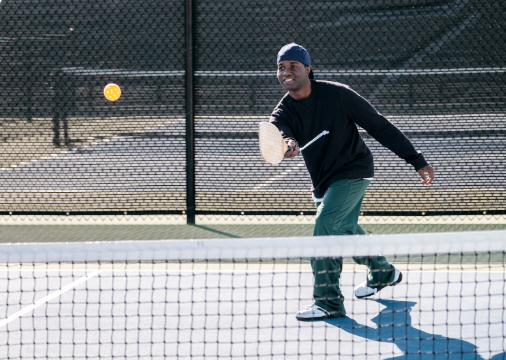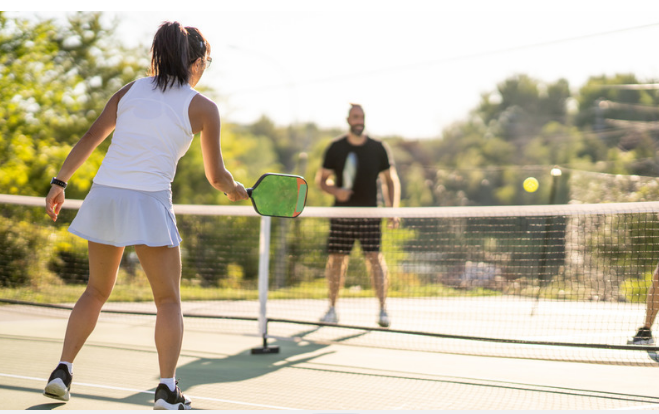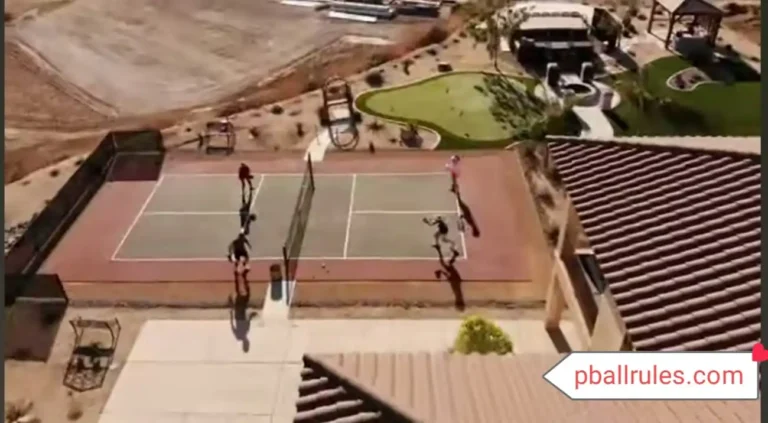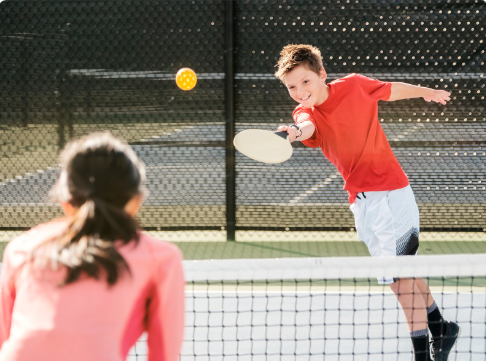Fast Track Your Game: Tips to Improve Your Pickleball Skills Quickly
In recent years, pickleball has taken the sports world by storm, emerging as one of the fastest-growing games in the U.S. and beyond. This hybrid of tennis, badminton, and table tennis, known for its distinctive paddles and perforated balls, is attracting a diverse audience with its unique blend of accessibility, social interaction, and competitive spirit. Its appeal spans generations, from young enthusiasts to senior players, making it a community-building sport.
Tips to Improve Your Pickleball Skills Quickly, This surge in popularity has led to an increasing number of people seeking to improve their game. Whether it’s to compete more effectively, enjoy the social aspects, or simply indulge in a fun and active lifestyle, enhancing pickleball skills has become a common goal for many.
Recognizing this trend, our article is dedicated to providing practical and actionable tips for players looking to fast-track their pickleball skills. We delve into essential aspects of the game, from mastering the basic rules and techniques to adopting advanced strategies that can give you an edge over your opponents. Our guide covers everything from selecting the right equipment, which can greatly impact your performance, to physical and mental training strategies that are crucial for higher-level play.
Moreover, we explore how engaging with the pickleball community and learning from experienced players can accelerate your learning curve. Whether you’re a beginner taking your first steps onto the court or an intermediate player aiming to refine your skills, these insights are designed to propel your pickleball journey forward swiftly and effectively. Join us as we navigate the exciting world of pickleball, equipping you with the knowledge to elevate your game and enjoy this captivating sport to its fullest.
Understanding the Basics of Pickleball
Pickleball, a captivating blend of tennis, badminton, and table tennis, is played on a court resembling a badminton layout, using a net similar to tennis but slightly lower. The game can be played in singles or doubles, and the basic objective is to score points by hitting a perforated polymer ball over the net without allowing it to be returned by the opponent. The game starts with a serve, which must be done underhand, diagonally crossing the court. The ball must bounce once on each side before volleys are allowed, a unique rule known as the ‘two-bounce rule.’
One of the key areas in a pickleball court is the ‘non-volley zone’ or ‘kitchen,’ a seven-foot area on either side of the net where players are not permitted to volley the ball. Mastering the art of playing both within and around this zone is crucial.
For beginners, understanding these foundational rules is essential. It sets the stage for developing advanced skills and strategies. Knowing when to volley, when to let the ball bounce, and how to serve and return effectively are basic skills that form the core of pickleball. Beginners should focus on these fundamental aspects, ensuring a solid grasp of the rules and basic techniques before moving on to more complex plays. This foundation not only enhances the enjoyment of the game but also paves the way for improved performance and competitive play.

Equipment Essentials
The right equipment is pivotal in pickleball. Choose a paddle that feels comfortable in terms of weight and grip size. There are paddles for different playing styles, from power to control. Balls vary for indoor and outdoor play, with outdoor balls being harder and less bouncy. Footwear is equally important; court shoes provide the necessary support and grip for the quick lateral movements of the game. Investing in quality equipment that aligns with your playing style can significantly enhance the performance and enjoyment of the game.
Skill Development Strategies
Forehand and Backhand Shots: The forehand and backhand shots are the bedrock of your pickleball arsenal. To improve your forehand, focus on a firm grip and a fluid arm movement, swinging from your shoulder with a slight wrist snap at the point of contact for added power. It’s essential to step into the shot, transferring your weight forward, which helps in driving the ball with force. For the backhand, the key is in the stance and the rotation of your torso. Keep your elbow close to your body for better control, and rotate your shoulders to generate power. Practice these shots regularly, aiming for consistency in placement and depth.
Serving with Precision: A precise serve in pickleball can give you a significant advantage. Start by developing a consistent serving routine. Stand sideways, shifting your weight from the back foot to the front as you swing. Aim for a low, deep serve to the back of the opponent’s court, which makes it difficult for them to launch an aggressive return. Experiment with different serving speeds and angles to keep your opponent guessing. Remember, consistency is key, so practice your serve until it becomes a reliable part of your game.
Mastering the ‘Soft Game’: The ‘soft game’ in pickleball involves dinks and drops, which are vital for a well-rounded skill set. Dinks are soft shots played at the net in the non-volley zone, intended to arc over the net and land softly in the opponent’s kitchen. They require finesse and control, focusing more on placement than power. Drops are similar but executed from the baseline, to clear the net with minimal height and landing in the non-volley zone. Mastering these shots requires practice and focusing on touch, angle, and trajectory.
Defensive Plays: Effective defense in pickleball involves anticipation and quick reaction. Improve your defensive skills by learning to read your opponent’s body language and preparing for their shots. This can be achieved by always maintaining a balanced, ready position. Work on your lateral movement and footwork, crucial in reaching shots and returning them effectively. Practice drills that simulate common game scenarios, such as rapid volleys and smashes, to enhance your reaction time and defensive strategy. Remember, a strong defense can often be the best offense in pickleball.
Physical Fitness and Conditioning
Physical fitness plays a pivotal role in enhancing your pickleball game. Being in good shape not only improves your overall performance but also minimizes the risk of injury, allowing for longer, more enjoyable play sessions. Key areas to focus on include agility, strength, and endurance.
Agility is crucial for quick directional changes and swift movements across the court. Exercises such as ladder drills, cone drills, and shuttle runs are excellent for improving agility. They train your body to move quickly and efficiently, crucial for reaching shots and responding to your opponent’s plays.
Strength training, particularly for your core, legs, and arms, is also vital. A strong core aids in maintaining balance and stability during powerful shots. Leg strength enhances your ability to move swiftly and jump, while arm strength improves your shot power. Incorporate exercises like squats, lunges, planks, and light weightlifting into your routine.
Endurance is another key component of physical fitness in pickleball. Cardiovascular exercises like jogging, cycling, or swimming increase your stamina, ensuring you maintain a high level of play throughout an entire match. Interval training, which alternates between high and low-intensity activity, is especially effective in mimicking the stop-start nature of pickleball.
Incorporating a balanced mix of agility, strength, and endurance exercises into your fitness regimen will significantly boost your pickleball performance. Regular training, tailored to these aspects, ensures you’re physically prepared to meet the demands of the game, keeping you competitive and agile on the court.
Mental Game and Strategy
Mental preparedness and strategic thinking are as important as physical skills in pickleball. Develop a game plan before each match, considering your strengths and your opponent’s weaknesses. Stay adaptable, and ready to change tactics as the game progresses. Reading the opponent’s body language and shot selection can provide insights into their next move, allowing you to anticipate and counter effectively.
Practice Routines and Drills
Effective practice is key to skill improvement. Incorporate a variety of drills that focus on different aspects of the game, such as serving, volleying, and groundstrokes. Solo drills can include wall practice for stroke consistency, while partner drills can focus on specific game scenarios. Regular practice, both structured and in-match play, will help refine your skills and strategies.
Learning from the Pros
Watching professional players offers valuable insights into advanced techniques and strategies. Observe their footwork, shot selection, and how they handle pressure situations. Resources like online videos, instructional tutorials, and attending live matches can be incredibly informative. Analyzing and incorporating elements from pro players can elevate your game.
Joining a Pickleball Community
Being part of a pickleball community provides opportunities for practice, competition, and learning from other players. Local clubs and groups can be found through social media, pickleball websites, or community centers. Playing with a variety of partners and opponents enhances your experience and exposes you to different playing styles.
Conclusion
In summary, improving your pickleball skills quickly involves a combination of understanding the basics, using the right equipment, honing specific skills through practice, staying physically fit, and engaging in strategic mental play. Joining a pickleball community and learning from pros can also provide invaluable insights. Apply these tips consistently to enjoy a rewarding journey in the world of pickleball.

